This brainteaser is certainly familiar to everyone, and the answer is not complicated. There are no penguins in the Arctic, and similarly, there are no polar bears in the Antarctic.
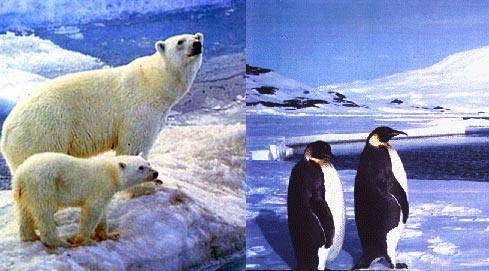
Polar bears and penguins Image source: pbs.org
Generally speaking, there is nothing wrong with this answer, but you may not know that Antarctic penguins have visited the North Pole with adventurers. Not only that, more than 100 years ago, there was a seabird in the Arctic that looked very similar to a penguin, and it was also called the "Arctic Penguin."
Passengers who came to the North Pole with the Neptune
In the 1930s, an explorer named Lars Christensen came to Antarctica, where he saw the largest penguin in the world, the Emperor Penguin. It is worth mentioning that this old man not only has an adventurous spirit, but is also proficient in hype and has a great financial acumen. After seeing these penguins pacing one foot deep and one foot shallow on the ice, Christensen immediately realized that there was an opportunity to make money.
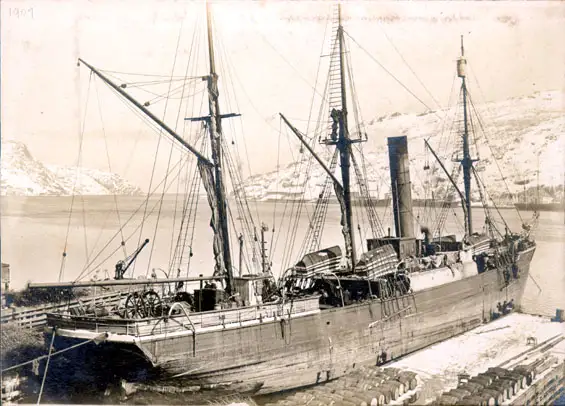
Neptune Image source: discover.hubpages.com
On the return voyage, he hid nine emperor penguins in the Neptune and took them to the cold Lofoten Islands in northern Norway. As for why the Lofoten Islands were chosen, the reason is also very simple. Polar bears, arctic foxes and other predators cannot reach these islands, and it is generally safer to raise penguins on them. It has to be said that these emperor penguins spent a relatively comfortable time here. People built fences on the island. During the period when the penguins were nesting, the authorities also issued a notice not allowing people to go to the island.
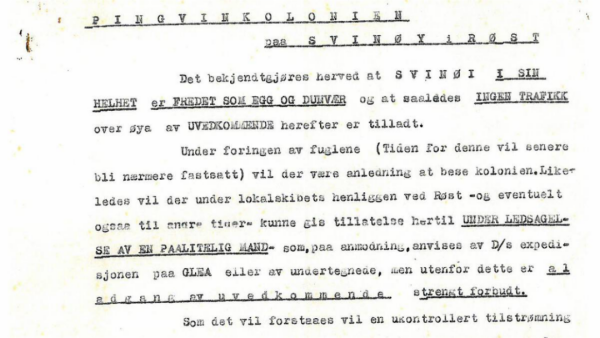
Notice from the authorities prohibiting people from going to the island Picture source: nrk.no
In fact, Christensen did succeed. Due to extensive media coverage, these "Antarctic visitors" received widespread attention and brought him a lot of income.
Having tasted the sweetness, Christensen decided to make a bigger deal. In 1938, two years after the first introduction of penguins, he once again introduced 60 penguins from the southern hemisphere. In order to keep people's interest in penguins fresh, this time he chose two other penguins, Macroni penguins and Gentoo penguins.
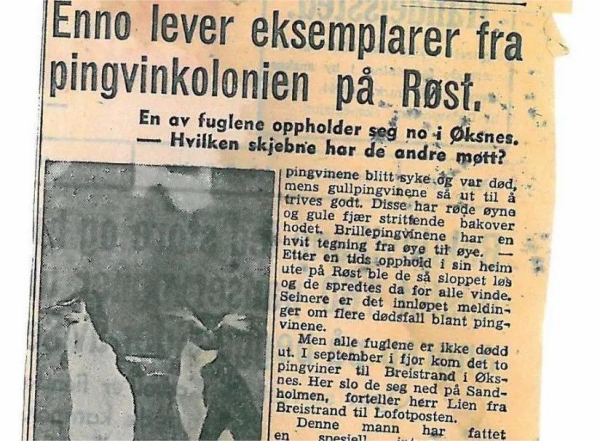
Local media reports on the introduction of emperor penguins Picture source: nrk.no
The penguins were initially kept in pens, but as people's enthusiasm for the penguins faded, Christensen felt that he was unprofitable. The penguins were eating more than he was allowed to earn, which made him unable to sit still. .
What can we do if we can't afford it? Let them all go. These travelers who have come all the way from the south are free. Although Norway's climate is as cold as their homeland, these flightless seabirds met a tragic fate after being released into the wild.
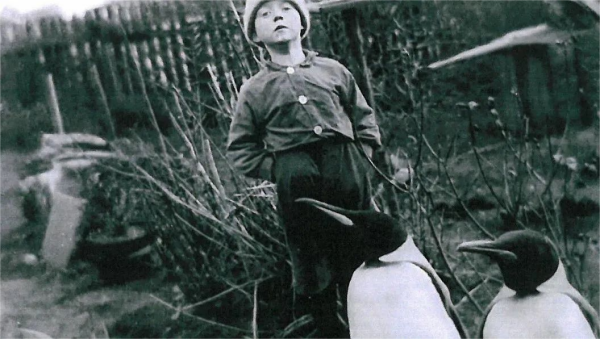
A little boy is raising penguins Picture source: nrk.no
Although Antarctica and the North Pole are both ice and snow, their completely different geographical environments determine that they have completely different ecosystems. Antarctica is land surrounded by ocean, while the North Pole is an ocean surrounded by land. In Antarctica, penguins have almost no natural enemies as long as they don't go into the water. Only underwater can they be hunted by seals and killer whales.
In fact, in other penguin distribution areas outside Antarctica, there are also no powerful predators on land. Penguins who are accustomed to a comfortable environment suddenly come to the Arctic, which is of course a sheep in a tiger's mouth. At least, the polar bears will not turn a blind eye to these slow-moving delicacies.
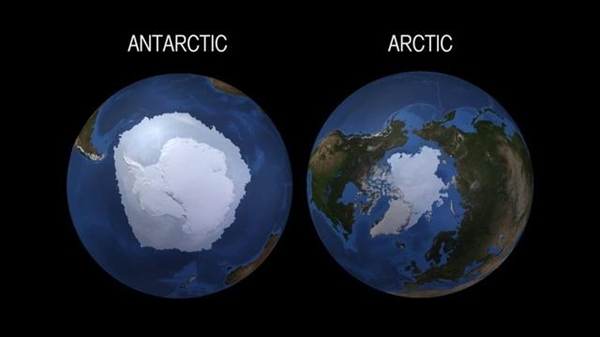
Antarctica and Arctic Image source: NASA
According to reports, in 1954, people last witnessed this batch of released penguins, and the penguins' short Arctic journey came to an end, just like the disappearance of the last great auk 110 years ago, which is sighing.
In the 18th century, on a small island off the coast of Scotland, basalt cliffs sparkled in the sun and icy waters lapped. There is a kind of big black and white bird floating in the waves. They are waiting for the right time to land. Although they have wings, they cannot fly with their wings. These big birds are called great auks. If they are not extinct today, some people will definitely regard them as the "penguins" of the Arctic.
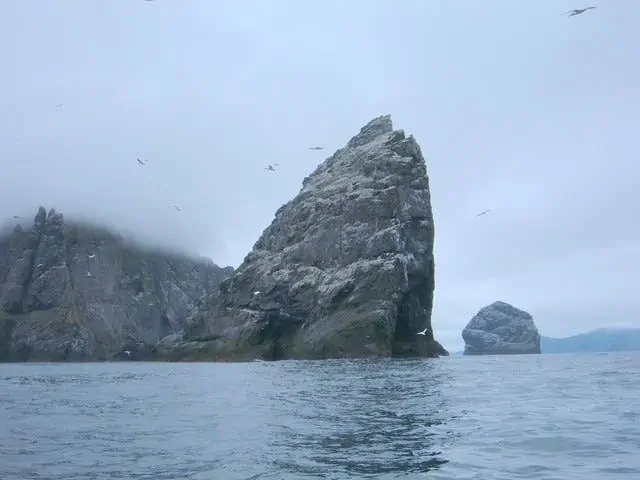
Stac an Armin in Scotland, the former habitat of the great auk Image source: zmescience.com
The last auk was killed by three fishermen in 1844, and its body was sold to the museum by the fishermen. For a seabird that cannot fly and is hunted to extinction by humans, this seems to be A tragic but fitting ending.
Auks roamed the Arctic "land" about 5 million years ago, long before ancient humans appeared. Auks are about 75-80 centimeters tall and can weigh up to 5 kilograms. Their backs are black and their abdomens are white. Their appearance and behavior are very similar to penguins, but they are not related.

Specimens of great auks Picture source: zmescience.com
Due to the premature extinction of the great auk, modern scientists have never truly observed the behavior and life of the great auk in the wild. However, based on the study of its relative, the razor-billed auklet, scientists have learned about this flightless seabird. Behavior also has a certain understanding. The great auk's natural enemies may be orcas, polar bears or white-tailed eagles, but almost none of these natural enemies come to the islands where the great auk lives.
Of course, this is not absolute, the Little Ice Age from the 16th century to the 19th century. Glacier activity was intense, and the expanding glaciers made it easier for polar bears to approach the great auks, which caused a certain decline in the population of the great auks. However, the adaptability of the great auks allowed them to survive until humans entered their territory. the tragic fate of this species.
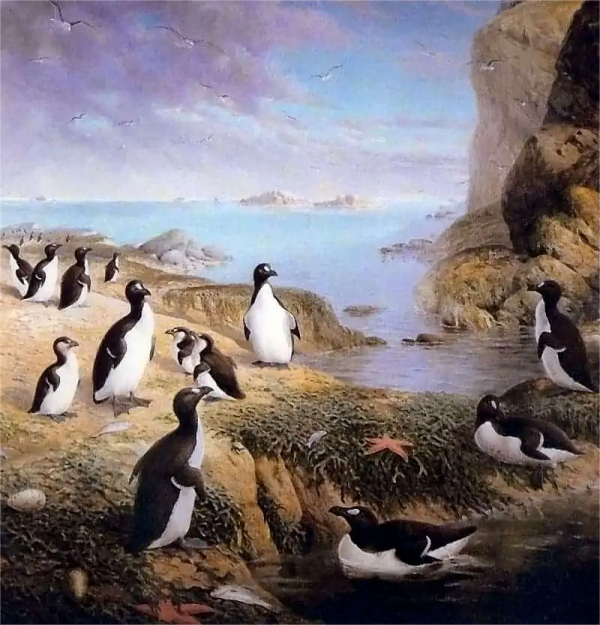
Auks all over the island Picture source: zmescience.com
Archaeological and historical records show that humans have a long history of hunting great auks. In prehistoric times, the Beotuks of North America, the Inuit of Greenland, and even the Neanderthals all hunted great auks; in the 16th century AD, European sailors began to hunt the sea in the fishing grounds of Newfoundland. Intensive hunting of auks; in the late 18th century, the trade of auk feathers further intensified hunting behavior, and the scarcity of auks further stimulated the desire for private and museum collections.
Finally, the great auk ushered in extinction.
There is no doubt that human hunting is an important reason for the extinction of the great auk, but some people believe that the number of the great auk may have begun to decline due to environmental changes. However, a recent study of the great auk shows that even without the impact of environmental change, human hunting is enough to drive this large bird to extinction.
No need to blame, humans are the murderers
In a 2019 study published in the journal eLife, scientists studied the impact of human hunting on the extinction of the great auk by integrating genetic data and ocean current data, as well as historical hunting records of the great auk. Specifically, the researchers collected the remains of auks across their range, extracted DNA from them, sequenced the mitochondrial genome, inferred the historical population dynamics of this species, and released GPS-equipped devices in their former distribution areas. drift chamber to speculate on the auk's potential migration routes.
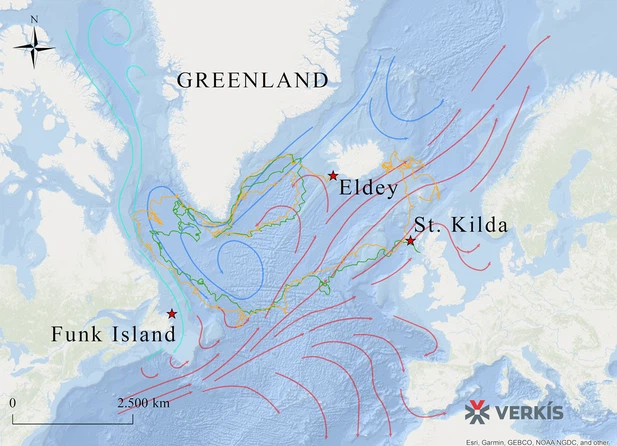
Speculated possible migration route of the great auk Picture source: Reference
If environmental changes will have a great impact on the survival of the great auk, then it will be reflected in its genetic information. In fact, scientists found that the great auk experienced a population decline during the Pleistocene (more than 40,000 years ago), but the auk population subsequently recovered, and its effective population size has not experienced a significant increase since then. decline, meaning the environment had a minimal impact on its extinction.
Further, scientists estimated the possible impact of hunting on the auk's extinction. The results show that hunting 210,000 auks and picking up less than 26,000 auk eggs each year could lead to the complete disappearance of the great auk in 350 years. The intensity of human hunting of great auks may far exceed 210,000 auks per year. According to historical records, during a hunting operation near the coast of Funk Island, 1,000 great auks were captured and killed by two fishing boats within half an hour.
The role of humans and environmental changes in causing species extinction has long been controversial, but there is no doubt that humans have an unshirkable responsibility for the extinction of the great auk, and blaming the environment is obviously an extremely irresponsible behavior.
A British Royal Navy sailor named Aaron Thomas once wrote this sentence:
"If you come for their feathers, you don't have to bother killing them, just pluck the best feather and let the poor penguins drift with the tide."
Birds have feathers. Is there anything wrong with that?
animal tags: penguin arctic antarctic
We created this article in conjunction with AI technology, then made sure it was fact-checked and edited by a Animals Top editor.